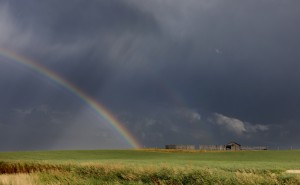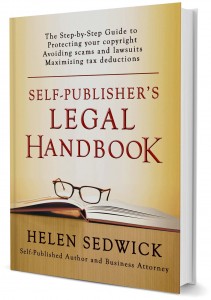 Everyone does it. Downloads a great image from the internet, pastes it on their own blog, shares it on FaceBook, Tumblr or Pinterest, and moves on, forgetting, ignoring, or simply not knowing they are using someone’s property without permission. It’s like borrowing someone’s car without permission and not refilling the gas tank.
Everyone does it. Downloads a great image from the internet, pastes it on their own blog, shares it on FaceBook, Tumblr or Pinterest, and moves on, forgetting, ignoring, or simply not knowing they are using someone’s property without permission. It’s like borrowing someone’s car without permission and not refilling the gas tank.
My mother said it best. “Just because everyone else is doing it, doesn’t make it right.”
Sorry to say, but your chances of getting caught are increasing. You’ll open your email one morning to find a nasty lawyer letter demanding a multi-thousand dollar payment.
New “reverse image search engines” are expanding their reach. Everyone from casual photographers to international stock image vendors are signing up with TinEye and others to scan the internet for infringing users. TinEye claims to have indexed over 4 Billion images.
Even Google Images performs reverse image searches.
But it’s fair use, you argue. You are using the image for non-commercial, educational, critical, or commentary uses only. Maybe yes, but do you want to fight that fight with Getty Images or Reuters News or Rupert Murdoch?
Take an hour to clean up your blog. Here’s how.
First, determine who owns an image. Go to TinEye or Google Images and upload the image. On Goggle Images, click on the camera icon in the search line. You will get a list of results.
If the list includes one or more stock image sites such as Dreamstime, Getty Images or IStockphoto, then sooner or later, you are going to get that nasty lawyer letter. These companies search the internet for infringing users. They hire teams like the Copyright Enforcement Group.
I suggest you delete the unauthorized image and replace it with a licensed image ASAP. (See my post Stock Images – A Little Money Goes a Long Way.) You do not have to buy a large or high-resolution image. The smallest and lowest resolution image works for most web uses. Keep your receipt. You might get a demand letter based on your prior use (after all, nothing completely disappears from the internet), but it will help if you have corrected your mistake.
If you find the image only on news or other websites, look for a copyright notice on or near the image. Search on-line for the copyright owner and ask permission to use the image. If you can’t find a copyright notice, contact the largest and most prestigious website using the image. That site is most likely to have obtained permission.
If you cannot determine who owns the image, or if you cannot get permission, or if you do not want to pay for the license, or if all this is too much bother, then delete the image and replace it with something in the public domain or a free image under a Creative Commons License. See my blogs about the public domain and the Creative Commons.
For fun, try a Google Reverse image search of your author head shot. The results may surprise you. When I ran mine, Google including a photo of Julia Roberts as a “visually similar image.” Sure. Why not.
SHARE THIS







Hi Helen. We haven’t crossed paths in the cyber world for awhile, but I have a question that you may be able to help me with.
I’m a big advocate for not using illegal images. Before I knew better about some photos I used on my blog that were said to be ‘free’ to use, I got an email letter from LLC saying one of my photos were illegally being used on my blog. I was blown away and scared and I paid the fine to get them off my back, and of course removed the image instantly.
After that event last fall, I went through every single blog post (grueling) and removed photos I wasn’t sure about.
The other day I got another notice from LLC with a screenshot again of an illegal image on an old blog post which I had taken down last fall when I did the clean sweep. That image hasn’t been on my blog for quite a few months, and yet they’re now coming after me for something that isn’t on my blog.
I’ve read a lot about these internet trolls going after photos everywhere, especially Canadians with a loophole in IPS sharing of internet providers. How can they be fining me for something that was removed months ago? Does this mean they can go into removed posts from everyone who ever used an illegally obtained photo, realized their mistakes and took the photos off the blog forever?
Debby, I’ll send you an email response.
Great question, dgkaye! Helen, would you mind sharing your response with me as well? I just found your site yesterday and am so thankful I did. Fear of running afoul of legal issues I am not even aware of or don’t know how to navigate is the number one thing holding me back from writing. I ordered your book as soon as I found it and have been absorbing your various posts. Thank you, thank you, thank you for addressing these topics!
Lora,
My general advice to anyone who gets a letter demanding payment for the use of an image is to be very skeptical. While some of these letters may be legitimate, I have also seen letters from no-name companies that are not lawyers, not stock image companies and not rights management companies. With a little research, I find their “headquarters” is a PakMail or other mailbox rental site. So I suspect they don’t have any right to assert an infringement claim or collect a payment. I suspect they are scams, but people are intimidated by these letters and send in payments without checking.
If you get a legitimate letter, then check with a lawyer. But don’t assume the letter is legit.
Thanks, Helen. I was actually referring to the last question about whether old posts where the photo had been removed could still cause a blogger issues. Thanks again.